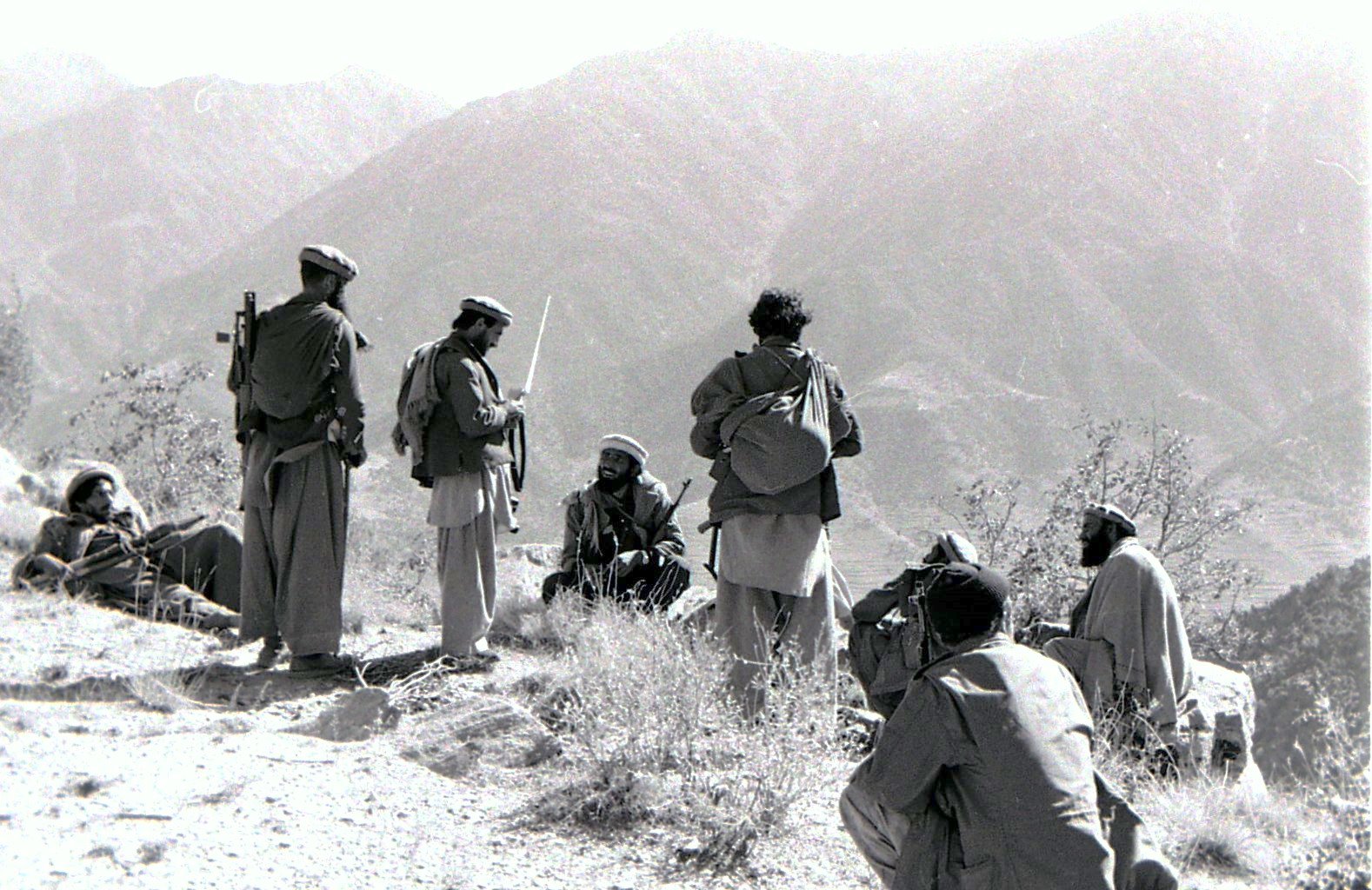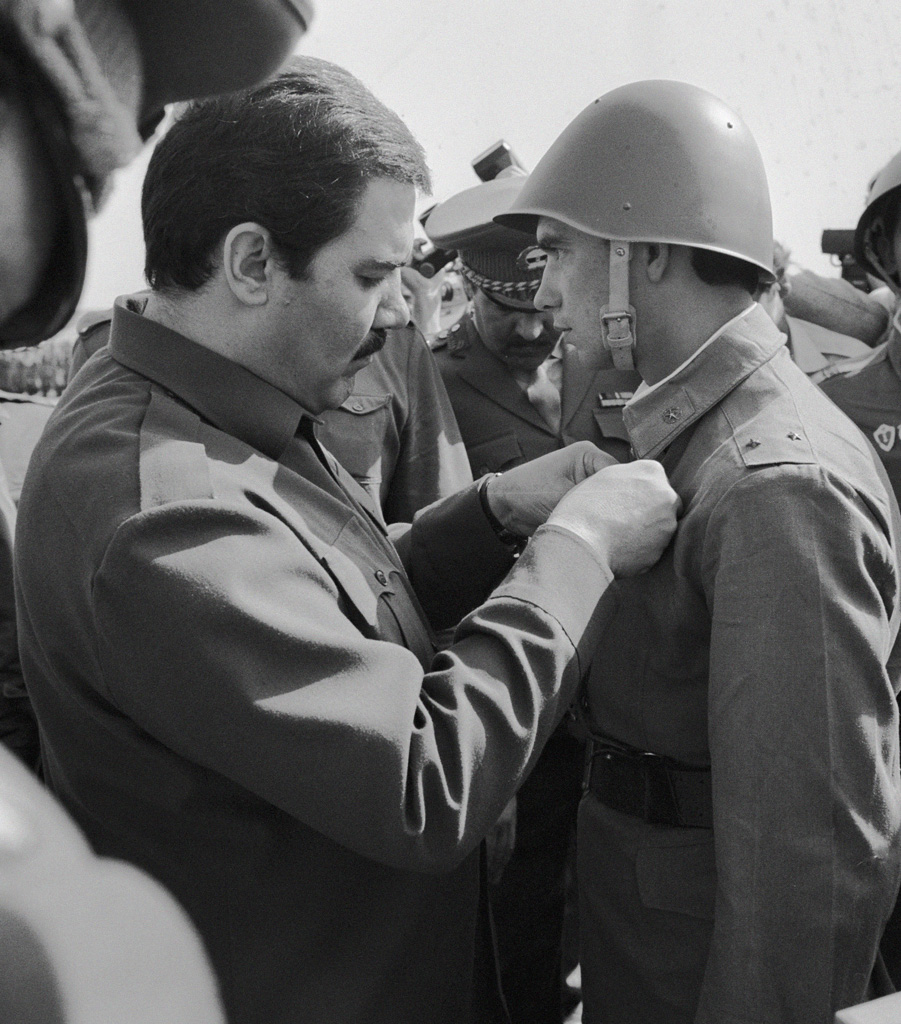|
Marshal Fahim National Defense University
The Marshal Fahim National Defense University, also known as the Afghan National Defense University, is a military academy located in Kabul, Afghanistan. It formally housed various educational establishments for the Afghan Armed Forces. The university sits on a 105 acres of land west of Kabul in the Qargha area. The University was taken over by the Taliban after the withdrawal of United States troops from Afghanistan. There are three distinct parts to the university: * the National Military Academy of Afghanistan (NMAA), * the Afghan National Army Officer Academy (ANAOA), and * the Non-Commissioned Officer (NCO) Academy, which will include the Sergeant Major Academy. The site also housed the ANA Foreign Language Institute. Geography The key to Qargha's historical and strategic importance is its geographical position. Qargha lies at the western extremity of Kabul, a low plateau dominated to the north and west by a crescent-shaped range of hills. To the southwest the pass lead ... [...More Info...] [...Related Items...] OR: [Wikipedia] [Google] [Baidu] |
Kabul
Kabul (; ps, , ; , ) is the capital and largest city of Afghanistan. Located in the eastern half of the country, it is also a municipality, forming part of the Kabul Province; it is administratively divided into 22 municipal districts. According to late 2022 estimates, the population of Kabul was 13.5 million people. In contemporary times, the city has served as Afghanistan's political, cultural, and economical centre, and rapid urbanisation has made Kabul the 75th-largest city in the world and the country's primate city. The modern-day city of Kabul is located high up in a narrow valley between the Hindu Kush, and is bounded by the Kabul River. At an elevation of , it is one of the highest capital cities in the world. Kabul is said to be over 3,500 years old, mentioned since at least the time of the Achaemenid Persian Empire. Located at a crossroads in Asia—roughly halfway between Istanbul, Turkey, in the west and Hanoi, Vietnam, in the east—it is situated in a stra ... [...More Info...] [...Related Items...] OR: [Wikipedia] [Google] [Baidu] |
George Pollock
Field marshal (United Kingdom), Field Marshal Sir George Pollock, 1st Baronet (4 June 1786 – 6 October 1872) was a British Indian Army officer. He first saw action at the Battle of Deeg and at the Siege of Bhurtpore (1805), Siege of Bhurtpore during the Second Anglo-Maratha War before taking part in the Anglo-Nepalese War. He also commanded the British artillery at the Battle of Prome and at Bagan during the First Anglo-Burmese War. Following a disastrous 1842 retreat from Kabul, retreat from Kabul in January 1842 during the First Anglo-Afghan War, the retreating forces became stranded at the small British garrison at Jalalabad and Pollock was appointed Commander of the Force sent to relieve the garrison: he advanced through the Khyber Pass and Battle of Jellalabad, relieved the garrison in April 1842. He then set about an unauthorised but ultimately successful mission to rescue the British hostages who had been left behind in Kabul prior to the retreat. In 1844 the Pollock Me ... [...More Info...] [...Related Items...] OR: [Wikipedia] [Google] [Baidu] |
National Military Academy Of Afghanistan
The National Military Academy of Afghanistan (NMAA) ( ps, د افغانستان ملي پوځي اکاډمي fa, آکادمی نظامی ملی افغانستان) was one of three academic institutions of the Marshal Fahim National Defense University. It was a four-year military development institution dedicated to commissioning officers for the Afghan National Army (ANA) and the Afghan Air Force (AAF). The mission of the NMAA was to produce officers for the Afghan Armed Forces that also have a four-year college level bachelor's degree. The academy was based upon the United States Military Academy and United States Air Force Academy. After the fall of the Islamic Republic of Afghanistan on August 15th 2021 to the Taliban, and the simultaneous collapse of the Afghan National Army and Afghan Air Force the same day, the Academy was officially shut down. Academics All cadets who graduated from NMAA receive a bachelor's degree, which are being offered in English language, Civil Engi ... [...More Info...] [...Related Items...] OR: [Wikipedia] [Google] [Baidu] |
Kabul International Airport
, nativename-r = , image = Flightline at Kabul International Airport.jpeg , caption = The flightline at Kabul International Airport in January 2012 , IATA = KBL , ICAO = OAKB , type = Public , owner = Government of Afghanistan , built = , operator = GAAC Holding , city-served = Kabul and nearby provinces , location = Kabul, Afghanistan , hub = * Ariana Afghan Airlines * Kam Air , metric-elev = yes , elevation-f = 5877 , coordinates = , pushpin_map = Afghanistan #South Asia#West Asia#Asia , pushpin_relief = , pushpin_mapsize = 270 , pushpin_map_caption = Location of airport in Afghanistan , pushpin_label = KBL/OAKB , pushpin_label_position = , image_map = Kabul-Airport-Diagram.png , image_mapsize = 270 , image_map_caption = United States Air Force airport d ... [...More Info...] [...Related Items...] OR: [Wikipedia] [Google] [Baidu] |
Kabul Military Training Center
The Kabul Military Training Center (KMTC) was a basic training centre for the Afghan Armed Forces. Located about 8 miles to the east on the outskirts of Kabul, it offered basic courses including 16-week basic infantry training. Kabul Military Training Center was one of the biggest basic training centers in Afghanistan. As of April 2008, of the 70,000 Afghans which had entered the Afghan National Army (ANA), a third had been trained at the KMTC between 2007 and 2008. Basic training The KMTC undertook basic combat training of new recruits with a 16-week basic training course. Capable of graduating a 615-person battalion every four weeks, there were roughly 2,500 soldiers and airmen undertaking training at any one time. Literacy training A major focus of the development of the Afghan Armed Forces was on raising the levels of literacy among the troops. In 2009 less than 35% of recruits could pass basic weapon qualification due to low literacy levels. Recruits were unable to properly ... [...More Info...] [...Related Items...] OR: [Wikipedia] [Google] [Baidu] |
Non-commissioned Officer
A non-commissioned officer (NCO) is a military officer who has not pursued a commission. Non-commissioned officers usually earn their position of authority by promotion through the enlisted ranks. (Non-officers, which includes most or all enlisted personnel, are of lower rank than any officer.) In contrast, commissioned officers usually enter directly from a military academy, officer candidate school (OCS), or officer training school (OTS) after receiving a post-secondary degree. The NCO corps usually includes many grades of enlisted, corporal and sergeant; in some countries, warrant officers also carry out the duties of NCOs. The naval equivalent includes some or all grades of petty officer. There are different classes of non-commissioned officers, including junior (lower ranked) non-commissioned officers (JNCO) and senior/staff (higher ranked) non-commissioned officers (SNCO). Function The non-commissioned officer corps has been referred to as "the backbone" of the armed se ... [...More Info...] [...Related Items...] OR: [Wikipedia] [Google] [Baidu] |
Officer (armed Forces)
An officer is a person who holds a position of authority as a member of an armed force or uniformed service. Broadly speaking, "officer" means a commissioned officer, a non-commissioned officer, or a warrant officer. However, absent contextual qualification, the term typically refers only to a force's ''commissioned officers'', the more senior members who derive their authority from a commission from the head of state. Numbers The proportion of officers varies greatly. Commissioned officers typically make up between an eighth and a fifth of modern armed forces personnel. In 2013, officers were the senior 17% of the British armed forces, and the senior 13.7% of the French armed forces. In 2012, officers made up about 18% of the German armed forces, and about 17.2% of the United States armed forces. Historically, however, armed forces have generally had much lower proportions of officers. During the First World War, fewer than 5% of British soldiers were officers (partly ... [...More Info...] [...Related Items...] OR: [Wikipedia] [Google] [Baidu] |
Soviet–Afghan War
The Soviet–Afghan War was a protracted armed conflict fought in the Democratic Republic of Afghanistan from 1979 to 1989. It saw extensive fighting between the Soviet Union and the Afghan mujahideen (alongside smaller groups of anti-Soviet Maoism, Maoists) after the former militarily intervened in, or launched an invasion of, Afghanistan to support the local pro-Soviet government that had been installed during Operation Storm-333. Most combat operations against the mujahideen took place in the Afghan countryside, as the country's urbanized areas were entirely under Soviet control. While the mujahideen were backed by various countries and organizations, the majority of their support came from Pakistan, Saudi Arabia, the United States, the United Kingdom, China, and Iran; the American pro-mujahideen stance coincided with a sharp increase in bilateral hostilities with the Soviets during the Cold War (1979–1985), Cold War. The conflict led to the deaths of between 562,000 and ... [...More Info...] [...Related Items...] OR: [Wikipedia] [Google] [Baidu] |
Mohammad Najibullah
Mohammad Najibullah Ahmadzai (Pashto/ prs, محمد نجیبالله احمدزی, ; 6 August 1947 – 27 September 1996), commonly known as Dr. Najib, was an Afghan politician who served as the General Secretary of the People's Democratic Party of Afghanistan, the leader of the one-party ruling Democratic Republic of Afghanistan from 1986 to 1992 and as well as the President of Afghanistan from 1987 until his resignation in April 1992, shortly after which the mujahideen took over Kabul. After a failed attempt to flee to India, Najibullah remained in Kabul. He lived in the United Nations headquarters until his assassination by the Taliban after their capture of the city. A graduate of Kabul University, Najibullah held different careers under the People's Democratic Party of Afghanistan (PDPA). Following the Saur Revolution and the establishment of the Democratic Republic of Afghanistan, Najibullah was a low profile bureaucrat. He was sent into exile as Ambassador to Iran dur ... [...More Info...] [...Related Items...] OR: [Wikipedia] [Google] [Baidu] |
Ahmad Shah Massoud
) , branch = Jamiat-e Islami / Shura-e Nazar Afghan Armed Forces United Islamic Front , serviceyears = 1975–2001 , rank = General , unit = , commands = Mujahideen commander during the Soviet–Afghan WarCommander of the United Islamic Front , battles = , awards = National Hero of Afghanistan Order of Ismoili Somoni , relations = , laterwork = Ahmad Shah Massoud (Dari/Pashto: , ; September 2, 1953September 9, 2001) was an Afghan politician and military commander. He was a powerful guerrilla commander during the resistance against the Soviet occupation between 1979 and 1989. In the 1990s, he led the government's military wing against rival militias; after the Taliban takeover, he was the leading opposition commander against their regime until his assassination in 2001. Massoud came from an ethnic Tajik, Sunni Muslim background in the Panjshir Valley of Northern Afghanistan. He began studying engineering at ... [...More Info...] [...Related Items...] OR: [Wikipedia] [Google] [Baidu] |
Abdul Rashid Dostum
Abdul Rashid Dostum ( ; prs, عبدالرشید دوستم; Uzbek Latin: , Uzbek Cyrillic: , ; born 25 March 1954) is an Afghan exiled politician, former Marshal in the Afghan National Army, founder and leader of the political party Junbish-e Milli. Dostum was a major army commander in the communist government during the Soviet–Afghan War, and in 2001 was the key indigenous ally to US Special Forces and the CIA during the campaign to topple the Taliban government. He is one of the most powerful and notorious warlords since the beginning of the Afghan wars, known for siding with winners during different wars. Born into an ethnic Uzbek peasant family in Jawzjan Province, Dostum joined the People's Democratic Party of Afghanistan (PDPA) as a teenager before enlisting in the Afghan National Army and training as a paratrooper, serving in his native region around Sheberghan. Soon with the start of the Soviet–Afghan War, Dostum commanded a KHAD militia and eventually gained a r ... [...More Info...] [...Related Items...] OR: [Wikipedia] [Google] [Baidu] |

.jpg)

.jpg)





